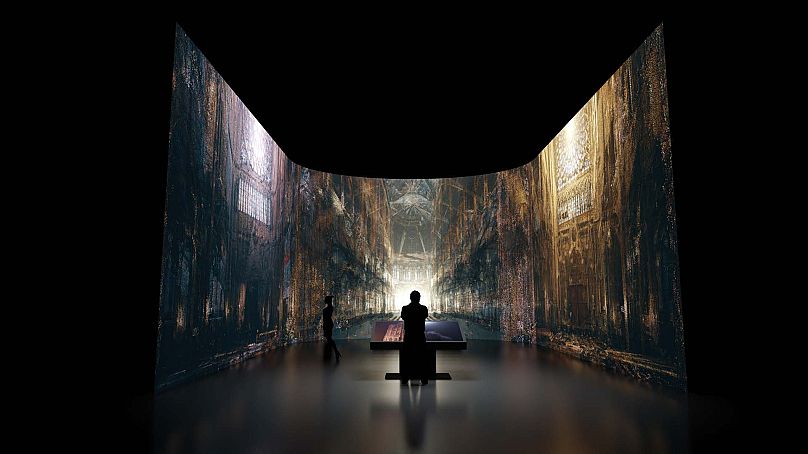The Notre-Dame Cathedral required five years to restore following the severe fire, yet a digital replica would have been significantly simpler, as Microsoft’s president Brad Smith mentioned in November last year.
On Monday, he revealed that the theory is undergoing testing and mentioned that the Cathedral, constructed in 1345, will receive a digital replica.
A digital version of Notre-Dame is being developed in collaboration with the French culture ministry’s heritage institute and the startup Iconem. It uses cutting-edge imaging technology along with artificial intelligence (AI) to create the digital twin.
The goal is to “permanently preserve in digital form every detail of Notre Dame, ensuring that its structure, history, and symbolism remain protected and available for future generations,” stated Brad Smith, Microsoft’s president, in a blog post.
The digital twin would be given to the French government and “could be utilized by conservators and exhibited in the future Notre Dame de Paris Museum,” he added.
The initiative will also digitize historic opera sets and millions of artifacts in collaboration with prominent French cultural organizations, including 15,000 cinematic model sets from performances at the Opéra National de Paris between 1800 and 1914.
Microsoft’s goal is for the project to make the collections available to as many people as possible through interactive experiences on its platform.
The exact budget and finish date for the project remain undisclosed, but Smith mentioned to French media that the process will require a minimum of one year and is likely to cost several million dollars.
The initiative involves a collaboration with the Vatican to create a digital version of St. Peter’s Basilica.
Microsoft also stated on Monday that it plans to expand its innovation centers in Strasbourg to enhance the development of European languages within AI models, particularly
less represented European languages, to enhance the inclusivity of the technology.
Windows from Microsoft currently supports 90 languages, covering the 24 official European languages, along with Basque, Catalan, Galician, and Luxembourgish.
A U.S.-based company seeks to enhance its language capabilities and expand its collection of multilingual data by gathering information from audio recordings posted on the GitHub platform.
Microsoft stated that it would subsequently host and provide widespread access to the data on the Hugging Face platform.
‘The European project’
Microsoft is attempting to establish its brand in Europe and previously this year unveiled a initiative called
European Digital CommitmentsThe organization stated its goal is to grow AI and cloud infrastructure, reinforce digital resilience and data privacy measures, improve cybersecurity, and promote Europe’s digital independence and overall economic development.
Nevertheless, Europe is also making efforts to develop its own independent cloud infrastructure and promoting its own AI large language models (LLMs) in an attempt to reduce reliance on major technology corporations.
For instance, this involves multilingual text data from GitHub and voice data sets. MOIC and GitHub will collaborate with Hugging Face, a well-known platform for AI model development, to store and provide widespread access to the data.







